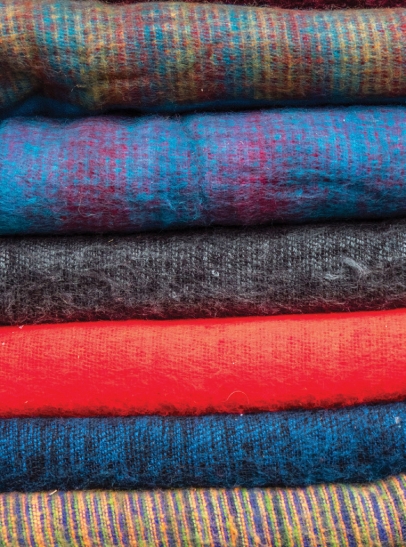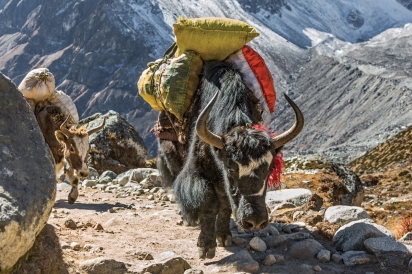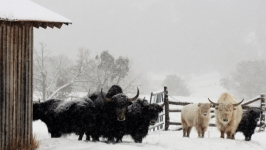Facts on Yaks
Domesticated yaks are descendants of wild yaks (Bos mutus), which are indigenous to the Himalaya and Tibetan Plateau. For approximately 4,500 years they’ve been used for their fiber, meat, milk, hides, muscle power and dung (the latter is used for fuel, fertilizer and as a building material).
The first yaks were brought to the U.S. in the late 19th century. Today, Colorado boasts the highest population of yaks in the nation, with 78 breeders at last count, according to the International Yak Association (IYAK). The environment is ideal since yaks thrive in cool, high-altitude climates; their thick hides offer protection from the extreme cold of the Himalaya and they’re adept at foraging for food beneath the snow. They also require about one third to one half less feed than beef cattle. To learn more, visit IYak.org.
Bull Market: Colorado is leading the charge on yak ranching
Why aren’t more Americans raising yaks, given their versatility? Says Tom Butler of Dolores’s Mesa View Yak Ranch, “I think old-time ranchers just don’t think about yaks. The restaurants that are interested in our meat are the new, farm-to-table, forward-thinking customers, but the industry is growing.”
The Butlers sell fiber and fiber products and yak hides as well as meat. Yak meat is lean, red and high in protein, omega-3’s and conjugated linoleic acid and low in cholesterol. The animals have a fat layer surrounding their muscles, rather than interspersed throughout the tissue as with cattle. Says Joe Goulet, chef at The Farm Bistro in Cortez, “The meat is mild, rich and succulent, with a sweeter flavor than beef, and it pairs well with spices and bold flavors.”
Yak milk is also wholesome, nutrient-dense and higher in butterfat than that of cows or goats. Jennifer Knoblauch raises yaks with her daughter, cheesemaker Amy Archer, who is one of the few people in Colorado producing cheese from yak milk (notably, a soft style with a consistency and flavor similar to that of a richer, full-fat whipped cream cheese) at Laz Ewe 2 Bar Goat Dairy and Lazy Yak Ranch in Del Norte.
Yak fiber is used for yarn and clothing; according to writer and textile artist Wini Labreque, it’s soft, durable, water-resistant and “the downy undercoat … is similar in fineness to cashmere or qiviut (musk ox fiber).” Cynthia Hoffman-Phillips, owner of Mystic T Ranch in Central City, sells Tibetan yak fiber primarily to artists and home spinners. Butte Pasture Yak Ranch sells breeding stock and offers classes on working with and creating products from yak fiber.
Basalt-based textile designers and importers Betina Moreira Infante and her husband, William Infante, established close relationships with entrepreneurial knitters, weavers and yak herders while living in Mongolia. Their new company, Hangai Mountain Textiles, sells stunning yak “down” throws, blankets, ponchos and other goods through local designer showrooms, such as Aspen Design Room and Cather’s Home. To learn more, visit HangaiMountainTextiles.com.
Autism and Animals
If you’d like to learn more about the therapeutic effects animals have on people with autism, Temple Grandin’s books, Thinking in Pictures: My Life with Autism and Animals in Translation: Using the Mysteries of Autism to Decode Animal Behavior are excellent and available through her website, TempleGrandin.com.
Ascendigo is a Carbondale-based nonprofit that “serves local, regional and national populations of youth and adults across the autism spectrum through experiential, community-based learning opportunities.” For more information or to donate, visit Ascendigo.org. —LM







